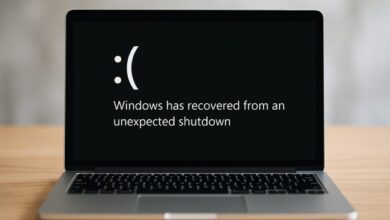Boost Customer Reach Using Innovative Proximity-Targeted Advertising

In today’s competitive business world, reaching customers at the right time and place is more important than ever. Proximity-targeted advertising is a strategy that helps companies connect with customers who are nearby and ready to engage.
By delivering relevant messages at the right moment, businesses can increase visits, sales, and brand loyalty. This approach uses technology and data to focus marketing efforts on people who are most likely to respond.
It saves resources and improves results compared to traditional advertising. With the right strategy, companies can create campaigns that attract attention, drive action, and build long-term customer relationships.
Understanding Proximity-Targeted Advertising
Proximity-targeted advertising is a method that uses a customer’s physical location to deliver marketing messages. Technologies like GPS, Wi-Fi, Bluetooth, and mobile apps make it possible to identify nearby customers. Businesses can send promotions, alerts, and notifications when people are close to their store, event, or service location.
This type of advertising works because it reaches customers at the moment they can take action. For example, a restaurant can send a lunch special to people nearby just before lunchtime. Understanding how proximity-targeted advertising works helps businesses design campaigns that engage customers effectively.
How It Differs From Traditional Advertising
Traditional advertising often targets broad audiences without considering location. TV, radio, and print ads reach many people, but not all of them are interested in the product or service. Proximity-targeted advertising focuses only on people who are nearby and likely to act.
This targeted approach increases the chance of engagement. It ensures marketing efforts are not wasted on people who are unlikely to visit or purchase. Businesses can also measure results more accurately because they know exactly who received the message and when.
The Role of Customer Data
Data is the foundation of successful proximity-targeted campaigns. Businesses collect information about customer behavior, preferences, and locations. This data helps segment audiences and personalize messages.
By analyzing customer patterns, businesses can predict what type of offer or promotion will work best. For example, a coffee shop can send morning deals to commuters and afternoon discounts to students. Using accurate data ensures that campaigns reach the right people at the right time.
Geo-Targeting vs. Geo-Fencing
Proximity-targeted advertising includes two main strategies: geo-targeting and geo-fencing. Geo-targeting sends messages to customers within a larger area, such as a city or neighborhood. Geo-fencing creates a virtual boundary around a specific location. When customers enter this boundary, they receive a notification or promotion.
Both methods have advantages. Geo-targeting works for broad campaigns, while geo-fencing is ideal for precise engagement. Businesses can use a combination of both strategies to reach more customers effectively.
Crafting Relevant Offers
The success of proximity-targeted campaigns depends on the offers themselves. Promotions should be relevant, timely, and appealing to the audience. Discounts, special deals, or limited-time offers attract attention and encourage immediate action.
Personalized offers make customers feel valued. For instance, sending a discount on a favorite product shows that the business understands the customer. Testing different offers helps determine which promotions generate the best response.
Timing and Frequency
Timing is critical in proximity-targeted advertising. Messages must arrive when customers are most likely to act. A store can schedule promotions during peak hours or around special events to maximize engagement.
Frequency also matters. Too many messages can annoy customers, while too few may result in missed opportunities. Finding the right balance ensures that campaigns capture attention without becoming intrusive.
Choosing the Right Tools
Selecting the right tools and platforms is essential for successful proximity-targeted campaigns. Businesses need reliable apps, analytics software, and tracking systems to manage campaigns effectively.
Using the right technology ensures accurate targeting, proper message delivery, and real-time tracking. It also allows companies to test different strategies and make adjustments quickly for better results.
Partnering With Experts
Working with a geofencing marketing agency can improve the success of proximity-targeted campaigns. These experts set up virtual perimeters, manage data, and optimize campaign delivery. They ensure that messages reach the right customers at the right time.
Agencies also provide performance analysis and suggest improvements for future campaigns. Their experience helps businesses avoid common mistakes and maximize return on investment. Partnering with professionals ensures campaigns run smoothly and achieve measurable results.
Enhancing Customer Engagement
Proximity-targeted advertising is not just about sending offers. It also provides opportunities for meaningful customer engagement. Interactive elements like loyalty programs, mobile coupons, and surveys make campaigns more engaging.
Gamification features, such as check-ins or scavenger hunts, encourage participation and create memorable experiences. Engaged customers are more likely to return and recommend the business to others. This long-term engagement strengthens brand loyalty and builds a strong customer base.
Measuring Campaign Success
Measuring results is essential for improving campaigns. Businesses track metrics like click-through rates, coupon redemptions, foot traffic, and sales. These insights show what is working and what needs adjustment.
Regular monitoring allows businesses to refine offers, optimize timing, and improve messaging. Continuous measurement ensures that campaigns remain relevant, efficient, and effective. By analyzing results, companies can make data-driven decisions that boost customer reach and increase revenue.
Future Trends in Proximity-Targeted Advertising
The future of proximity-targeted advertising is promising. Advancements in AI, machine learning, and predictive analytics make campaigns smarter and more personalized. Augmented reality (AR) and virtual reality (VR) may provide immersive experiences that attract more customers.
Businesses that adopt new technologies will stay ahead of competitors. Combining creative messaging with precise targeting ensures campaigns are engaging and effective. Staying updated with trends allows companies to reach more customers and adapt to changing market needs.
Learn All About Innovative Proximity-Targeted Advertising
Proximity-targeted advertising is a powerful way to connect with customers at the right time and place. By using location data, personalized offers, and smart technology, businesses can increase engagement, sales, and brand loyalty.
Understanding the tools, strategies, and data behind these campaigns is essential for success. Partnering with experts, crafting relevant offers, and measuring performance ensures maximum impact.
As technology continues to evolve, innovative proximity-targeted campaigns will remain a key strategy for boosting customer reach and growing businesses.
Visit our blog for more! NewsDipper.co.uk



